Knowing your options for the best cell phone plans can also come in handy when shopping for your next smartphone. A lot of the best cell phone deals require you to sign up for specific plans with a carrier, so you should check out if any required plan passes muster. Finally, finding the best cell phone plan might help you save money, if you’re able to track down a great plan that costs less than what you’re currently paying. In fact, comparing your current plan to other options is the first thing you should do when looking to save money on your cell phone bill. We’ve done the research on the best cell phone plans for you, checking prices to see what’s new and how much you can expect to pay. But we look at more than just price — coverage and data speeds are critical, too, especially in the area where you’ll use your phone the most. It also helps to get a plan from a top phone carrier so that your service comes with some solid perks. To make the decision easier, we’ve gone through the plans of both major wireless carriers and smaller MVNOs to create a list of the best cell phone plan for all sorts of different needs. You’ll find our top picks and a little bit of helpful advice on how to choose the plan for you.
Cheap cell phone plans
Simply want a cell phone plan on a budget? There are plenty of carriers that can offer you a cheaper plan if you don’t mind sacrificing your data cap somewhat. If you’re the kind of person who occasionally uses social media and the essential apps like Google Maps, WhatsApp or general browsing of the internet, you could get away with a plan offering anywhere from 1GB to 4GB of data each month. Depending on the wireless provider you use, you can get your costs down to somewhere between $10 and $15. In fact, three of the four plans below hit that price range, and the fourth benefits from a significant discount right away.
Unlimited cell phone plans
On the opposite end of the spectrum to the best cheap phone plans above, unlimited cell phone plans are often going to be among the most expensive on the market. But if you’re glued to your phone to stream Netflix on the go, scroll through Facebook and power through lots of data each month, the additional cost of an unlimited plan could well be worth it. Pros: Low costs, 500Mb data boosts annually Cons: Out of data once you hit your cap Realistically, you should expect to pay at least $30 here, though the bigger carriers charge between $60 and $90 a month for unlimited data. Those more expensive plans include more perks, such as free streaming service subscription, increased data for hotspots, and more. The best unlimited data plans often include 5G coverage, too.
Family cell phone plans
When shopping for the best family cell phone plan, cheaper isn’t always better. More expensive options tend to have larger data caps (or unlimited data), better coverage and more perks. Pros: Attractive perks, affordable price Cons: HD video streaming costs extra The best value does tend to be around the four-line mark but there are also plenty of two-line plans if that suits you better. Realistically, for four lines of data, you should expect to pay in excess of $100 and anywhere up to $200 depending on the plan and carrier.
Prepaid cell phone plans
For a lot of people, the best prepaid phone plans are going to be the ideal way to go. They are often some of the most affordable plans around, offering flexible contracts that usually have no contracts or credit checks. If you don’t want to get tied to a contract, that flexibility to cancel anytime will be a huge bonus. While these plans tend to focus on more affordable, low data contracts, you can also get unlimited data plans or slightly more expensive options with more benefits.
How we pick the best cell phone plans
Picking the best cell phone plans requires extensive research on exactly what each carrier offers. That means we’re checking the plans available at each of the three major carriers as you would expect, but we also extend our search to lesser know MVNOs, who often offer lower-priced plans. Once we’ve gathered all the data on available smartphone plans, we single out the lowest cost options. But because the best cell phone plan isn’t a one-size-fits-all choice, we look at the best options from the most popular carriers, as well as compelling values from discount carriers, giving you a wide variety of options to choose the best plan for you. (More on making that decision in a moment.) Because phone carriers are often changing up their plans, we make it a habit to periodically review what’s available. As a result, these rankings get updated at least once a month so that our picks reflect any changes to pricing or perks.
How to choose the best cell phone plan for you
Price is a big consideration when looking for the best cell phone plans, especially if you’re getting more than one line for other members of your family. Most carriers offer escalating discounts as you add lines, so you’ll want to compare the total cost of your plan based on the number of lines that require service. Cell phone plans are about more than just the amount on your bill each month, though. You also need to consider who offers the best coverage in your area and whether they support the phone you’ll want to use. Our guide to the best phone carriers can answer some of those questions, but you’ll also want to ask friends, neighbors and co-workers about how a specific carrier’s coverage is at your home and office, if you’re looking to switch wireless providers. Speaking of switching carriers, the major carriers are all willing to pick up some of the cost to get you to switch. These promotions can vary over time, so we’d suggest keeping an eye on any new carrier deals when you’re mulling a switch, as you could find extra ways to save money. Wireless carriers have spent the past several years building out their 5G coverage, and if you’ve got the right 5G phone, you can benefit from faster speeds if a carrier offers 5G service in your area. T-Mobile includes 5G coverage with its Magenta Plan, and Metro By T-Mobile customers with unlimited plans can also access T-Mobile’s 5G towers with a compatible smartphone. AT&T had required you to sign up for its most expensive unlimited data plan options for 5G, but now any unlimited plan qualifies for coverage. Verizon includes full 5G coverage in three of its four unlimited plans currently, but the cheapest plan, Start Unlimited lacks 5G Ultra Wideband coverage. Both AT&T and Verizon have extended 5G coverage to prepaid customers with unlimited data plans.
What kind of cell phone plan do I need?
As you would expect, there is no simple answer to this and the question is more about what is the best plan for you. This will obviously depend on a wide variety of factors. For those on a budget and looking for some flexibility, a prepaid cell phone plan will be an excellent way to go. These are often the cheapest options and the lack of contracts is going to be a massive bonus, especially if you like to change up carriers frequently. If you frequently stream Netflix on the go, like to play games on your phone or just generally drain your data at impressive speeds, an unlimited plan is an excellent way to go — especially as 5G becomes more common. Family cell phone plans are an excellent way to save money, especially as many carriers offer discounts as you add more lines to your plan. It will be no surprise that this is the way to go for the average family. Some carriers, such as Verizon and AT&T, let you mix and match plans, so parents can get an unlimited line with greater perks, while giving kids a cheaper line of data to save money overall. If you are simply after the lowest price possible, carriers including Mint Mobile and Tello can offer you really low costs if you don’t mind settling for smaller data caps. Realistically, cell phone plans tend to fall into one of these categories: cheap, prepaid, family, unlimited, kids or seniors. If you work out which one you fit into best you can narrow your search drastically.
MVNOs and main carriers: what’s the difference?
MVNOs are a slightly strange concept but they do offer an excellent way to get a cell phone plan on a budget. So what are they and how do they differ from the main carriers. Firstly, it’s important to note the main carriers. These are: AT&T, Verizon and T-Mobile, which absorbed Sprint in 2020. You can also include US Cellular in that group, though its coverage remains regional compared to the Big Three carriers. These brands use their own technology and run their own regional cellular networks. MVNOs (Mobile Virtual Network Operators) on the other hand are brands that don’t own and operate their own technology and instead ‘piggyback’ off of the services of one of the above brands. This allows them to be far cheaper than the main carriers but does mean they are the first to be restricted during peak usage periods and don’t get access to as many additional benefits. MVNOs used to have limited 5G coverage, though that seems to be changing, as carriers build out their coverage. \We explain more about this in our MVNO guide, but the main players are:
Mint Mobile: runs on T-MobileMetro by T-Mobile: runs on T-MobileCricket Wireless: runs on AT&TVisible: runs on VerizonBoost Mobile: runs on T-Mobile and is transitioning to AT&T
Cell phone plans comparison
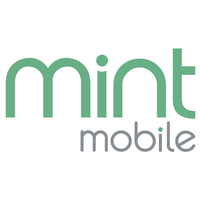
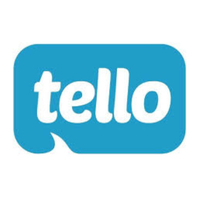
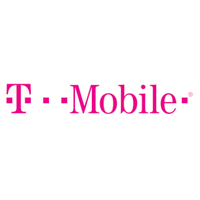






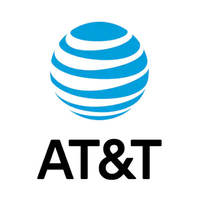






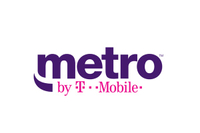
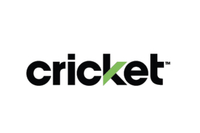
title: “Best Cell Phone Plans In 2022” ShowToc: true date: “2022-11-06” author: “Dorothy Chandler”
Knowing your options for the best cell phone plans can also come in handy when shopping for your next smartphone. A lot of the best cell phone deals require you to sign up for specific plans with a carrier, so you should check out if any required plan passes muster. Finally, finding the best cell phone plan might help you save money, if you’re able to track down a great plan that costs less than what you’re currently paying. In fact, comparing your current plan to other options is the first thing you should do when looking to save money on your cell phone bill. We’ve done the research on the best cell phone plans for you, checking prices to see what’s new and how much you can expect to pay. But we look at more than just price — coverage and data speeds are critical, too, especially in the area where you’ll use your phone the most. It also helps to get a plan from a top phone carrier so that your service comes with some solid perks. To make the decision easier, we’ve gone through the plans of both major wireless carriers and smaller MVNOs to create a list of the best cell phone plan for all sorts of different needs. You’ll find our top picks and a little bit of helpful advice on how to choose the plan for you.
Cheap cell phone plans
Simply want a cell phone plan on a budget? There are plenty of carriers that can offer you a cheaper plan if you don’t mind sacrificing your data cap somewhat. If you’re the kind of person who occasionally uses social media and the essential apps like Google Maps, WhatsApp or general browsing of the internet, you could get away with a plan offering anywhere from 1GB to 4GB of data each month. Depending on the wireless provider you use, you can get your costs down to somewhere between $10 and $15. In fact, three of the four plans below hit that price range, and the fourth benefits from a significant discount right away.
Unlimited cell phone plans
On the opposite end of the spectrum to the best cheap phone plans above, unlimited cell phone plans are often going to be among the most expensive on the market. But if you’re glued to your phone to stream Netflix on the go, scroll through Facebook and power through lots of data each month, the additional cost of an unlimited plan could well be worth it. Pros: Low costs, 500Mb data boosts annually Cons: Out of data once you hit your cap Realistically, you should expect to pay at least $30 here, though the bigger carriers charge between $60 and $90 a month for unlimited data. Those more expensive plans include more perks, such as free streaming service subscription, increased data for hotspots, and more. The best unlimited data plans often include 5G coverage, too.
Family cell phone plans
When shopping for the best family cell phone plan, cheaper isn’t always better. More expensive options tend to have larger data caps (or unlimited data), better coverage and more perks. Pros: Attractive perks, affordable price Cons: HD video streaming costs extra The best value does tend to be around the four-line mark but there are also plenty of two-line plans if that suits you better. Realistically, for four lines of data, you should expect to pay in excess of $100 and anywhere up to $200 depending on the plan and carrier.
Prepaid cell phone plans
For a lot of people, the best prepaid phone plans are going to be the ideal way to go. They are often some of the most affordable plans around, offering flexible contracts that usually have no contracts or credit checks. If you don’t want to get tied to a contract, that flexibility to cancel anytime will be a huge bonus. While these plans tend to focus on more affordable, low data contracts, you can also get unlimited data plans or slightly more expensive options with more benefits.
How we pick the best cell phone plans
Picking the best cell phone plans requires extensive research on exactly what each carrier offers. That means we’re checking the plans available at each of the three major carriers as you would expect, but we also extend our search to lesser know MVNOs, who often offer lower-priced plans. Once we’ve gathered all the data on available smartphone plans, we single out the lowest cost options. But because the best cell phone plan isn’t a one-size-fits-all choice, we look at the best options from the most popular carriers, as well as compelling values from discount carriers, giving you a wide variety of options to choose the best plan for you. (More on making that decision in a moment.) Because phone carriers are often changing up their plans, we make it a habit to periodically review what’s available. As a result, these rankings get updated at least once a month so that our picks reflect any changes to pricing or perks.
How to choose the best cell phone plan for you
Price is a big consideration when looking for the best cell phone plans, especially if you’re getting more than one line for other members of your family. Most carriers offer escalating discounts as you add lines, so you’ll want to compare the total cost of your plan based on the number of lines that require service. Cell phone plans are about more than just the amount on your bill each month, though. You also need to consider who offers the best coverage in your area and whether they support the phone you’ll want to use. Our guide to the best phone carriers can answer some of those questions, but you’ll also want to ask friends, neighbors and co-workers about how a specific carrier’s coverage is at your home and office, if you’re looking to switch wireless providers. Speaking of switching carriers, the major carriers are all willing to pick up some of the cost to get you to switch. These promotions can vary over time, so we’d suggest keeping an eye on any new carrier deals when you’re mulling a switch, as you could find extra ways to save money. Wireless carriers have spent the past several years building out their 5G coverage, and if you’ve got the right 5G phone, you can benefit from faster speeds if a carrier offers 5G service in your area. T-Mobile includes 5G coverage with its Magenta Plan, and Metro By T-Mobile customers with unlimited plans can also access T-Mobile’s 5G towers with a compatible smartphone. AT&T had required you to sign up for its most expensive unlimited data plan options for 5G, but now any unlimited plan qualifies for coverage. Verizon includes full 5G coverage in three of its four unlimited plans currently, but the cheapest plan, Start Unlimited lacks 5G Ultra Wideband coverage. Both AT&T and Verizon have extended 5G coverage to prepaid customers with unlimited data plans.
What kind of cell phone plan do I need?
As you would expect, there is no simple answer to this and the question is more about what is the best plan for you. This will obviously depend on a wide variety of factors. For those on a budget and looking for some flexibility, a prepaid cell phone plan will be an excellent way to go. These are often the cheapest options and the lack of contracts is going to be a massive bonus, especially if you like to change up carriers frequently. If you frequently stream Netflix on the go, like to play games on your phone or just generally drain your data at impressive speeds, an unlimited plan is an excellent way to go — especially as 5G becomes more common. Family cell phone plans are an excellent way to save money, especially as many carriers offer discounts as you add more lines to your plan. It will be no surprise that this is the way to go for the average family. Some carriers, such as Verizon and AT&T, let you mix and match plans, so parents can get an unlimited line with greater perks, while giving kids a cheaper line of data to save money overall. If you are simply after the lowest price possible, carriers including Mint Mobile and Tello can offer you really low costs if you don’t mind settling for smaller data caps. Realistically, cell phone plans tend to fall into one of these categories: cheap, prepaid, family, unlimited, kids or seniors. If you work out which one you fit into best you can narrow your search drastically.
MVNOs and main carriers: what’s the difference?
MVNOs are a slightly strange concept but they do offer an excellent way to get a cell phone plan on a budget. So what are they and how do they differ from the main carriers. Firstly, it’s important to note the main carriers. These are: AT&T, Verizon and T-Mobile, which absorbed Sprint in 2020. You can also include US Cellular in that group, though its coverage remains regional compared to the Big Three carriers. These brands use their own technology and run their own regional cellular networks. MVNOs (Mobile Virtual Network Operators) on the other hand are brands that don’t own and operate their own technology and instead ‘piggyback’ off of the services of one of the above brands. This allows them to be far cheaper than the main carriers but does mean they are the first to be restricted during peak usage periods and don’t get access to as many additional benefits. MVNOs used to have limited 5G coverage, though that seems to be changing, as carriers build out their coverage. \We explain more about this in our MVNO guide, but the main players are:
Mint Mobile: runs on T-MobileMetro by T-Mobile: runs on T-MobileCricket Wireless: runs on AT&TVisible: runs on VerizonBoost Mobile: runs on T-Mobile and is transitioning to AT&T
Cell phone plans comparison

















